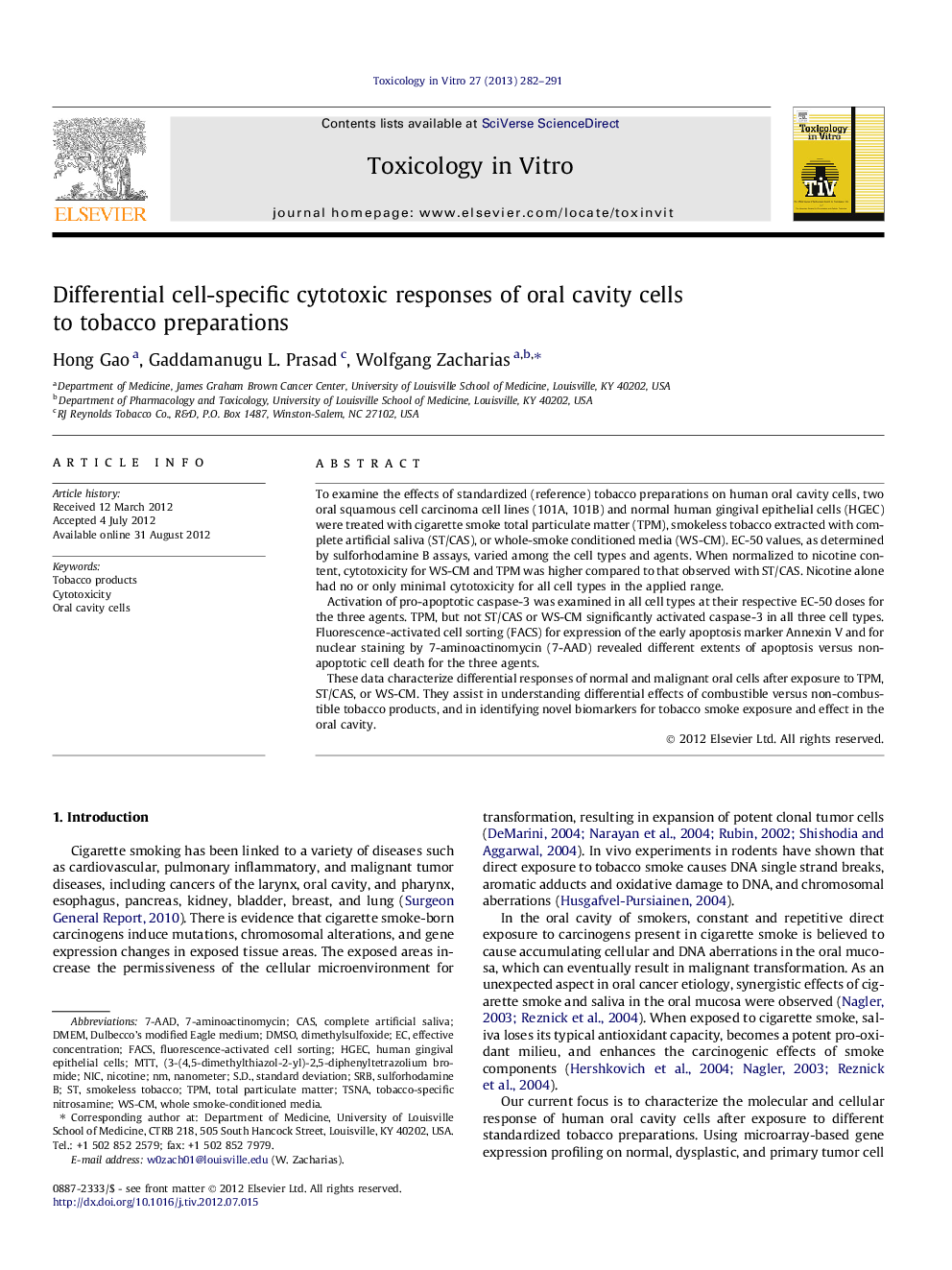| Article ID | Journal | Published Year | Pages | File Type |
|---|---|---|---|---|
| 5862883 | Toxicology in Vitro | 2013 | 10 Pages |
To examine the effects of standardized (reference) tobacco preparations on human oral cavity cells, two oral squamous cell carcinoma cell lines (101A, 101B) and normal human gingival epithelial cells (HGEC) were treated with cigarette smoke total particulate matter (TPM), smokeless tobacco extracted with complete artificial saliva (ST/CAS), or whole-smoke conditioned media (WS-CM). EC-50 values, as determined by sulforhodamine B assays, varied among the cell types and agents. When normalized to nicotine content, cytotoxicity for WS-CM and TPM was higher compared to that observed with ST/CAS. Nicotine alone had no or only minimal cytotoxicity for all cell types in the applied range.Activation of pro-apoptotic caspase-3 was examined in all cell types at their respective EC-50 doses for the three agents. TPM, but not ST/CAS or WS-CM significantly activated caspase-3 in all three cell types. Fluorescence-activated cell sorting (FACS) for expression of the early apoptosis marker Annexin V and for nuclear staining by 7-aminoactinomycin (7-AAD) revealed different extents of apoptosis versus non-apoptotic cell death for the three agents.These data characterize differential responses of normal and malignant oral cells after exposure to TPM, ST/CAS, or WS-CM. They assist in understanding differential effects of combustible versus non-combustible tobacco products, and in identifying novel biomarkers for tobacco smoke exposure and effect in the oral cavity.
⺠Combustible and non-combustible tobacco differ in effects on oral cavity cells. ⺠Nicotine alone has minimal cytotoxicity for oral cavity cells. ⺠Cytotoxicity is determine by type of tobacco product, not by nicotine content. ⺠Normal oral cells are more resistant to cytotoxic effects than oral cancer cells.
